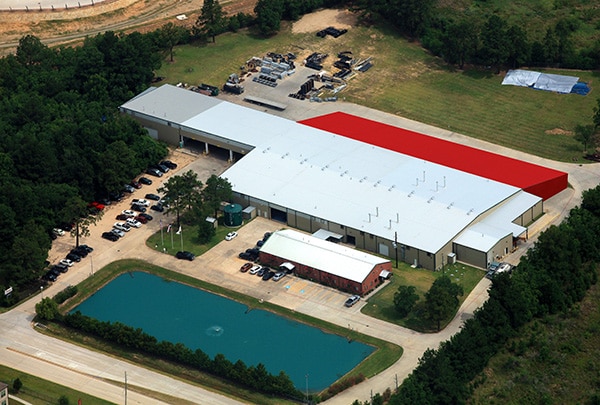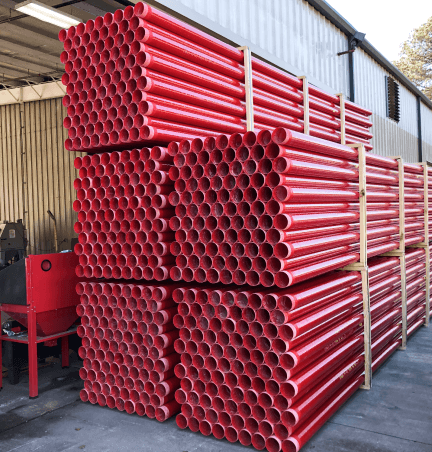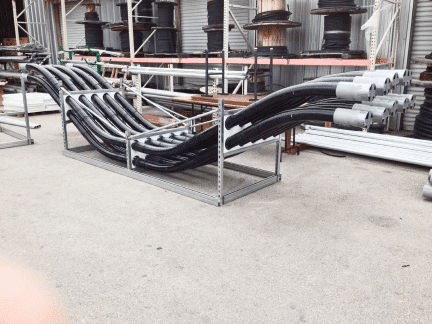Manufacturing Information
Champion Strut lead-times range from stock on most all items to longer depending on the item and number of parts required. Please contact Champion Fiberglass for the availability for any strut items.
The state-of-the-art Champion Fiberglass manufacturing facility is located in Spring, Texas. All Champion Fiberglass products are proudly made in the USA, ensuring quality and qualifications for domestic supplier requirements. Champion Fiberglass is an ISO 9001:2015 and ISO 14001:2015 Certified Company.

The Champion Fiberglass conduit manufacturing process is single-circuit filament winding. This process involves strands of fiberglass tension winding over a rotating mandrel. The strands are laid in a precise pattern and impregnated with resin as they are wound onto the mandrel. Once the desired thickness is reached, the conduit is cured under high temperature thereby ensuring maximum strength. This process results in a lightweight, strong conduit product that retains its shape after impact or compression and stands up to extreme conditions better than other options.
You’ll find it listed in Article 355 as Reinforced Thermosetting Resin Conduit.
You’ll find it listed in Article 12-200 of the CEC as Rigid RTRC Conduit.
Champion Duct® is:
- UL Listed for newly expanded support spacing distances.
- UL 2515 Listed for above-ground installations.
- UL 2420 Listed for below-ground installations
- Is CSA listed per CSA-22.2 No 211.3-96 standards
Standard Wall, Medium Wall (UL designates Champion Fiberglass MW for 5″ and 6″ as SW), and Heavy Wall conduit are UL Listed for extended support spacing distances.
Champion Haz Duct® XW is UL Listed for extended support spacing distances.










